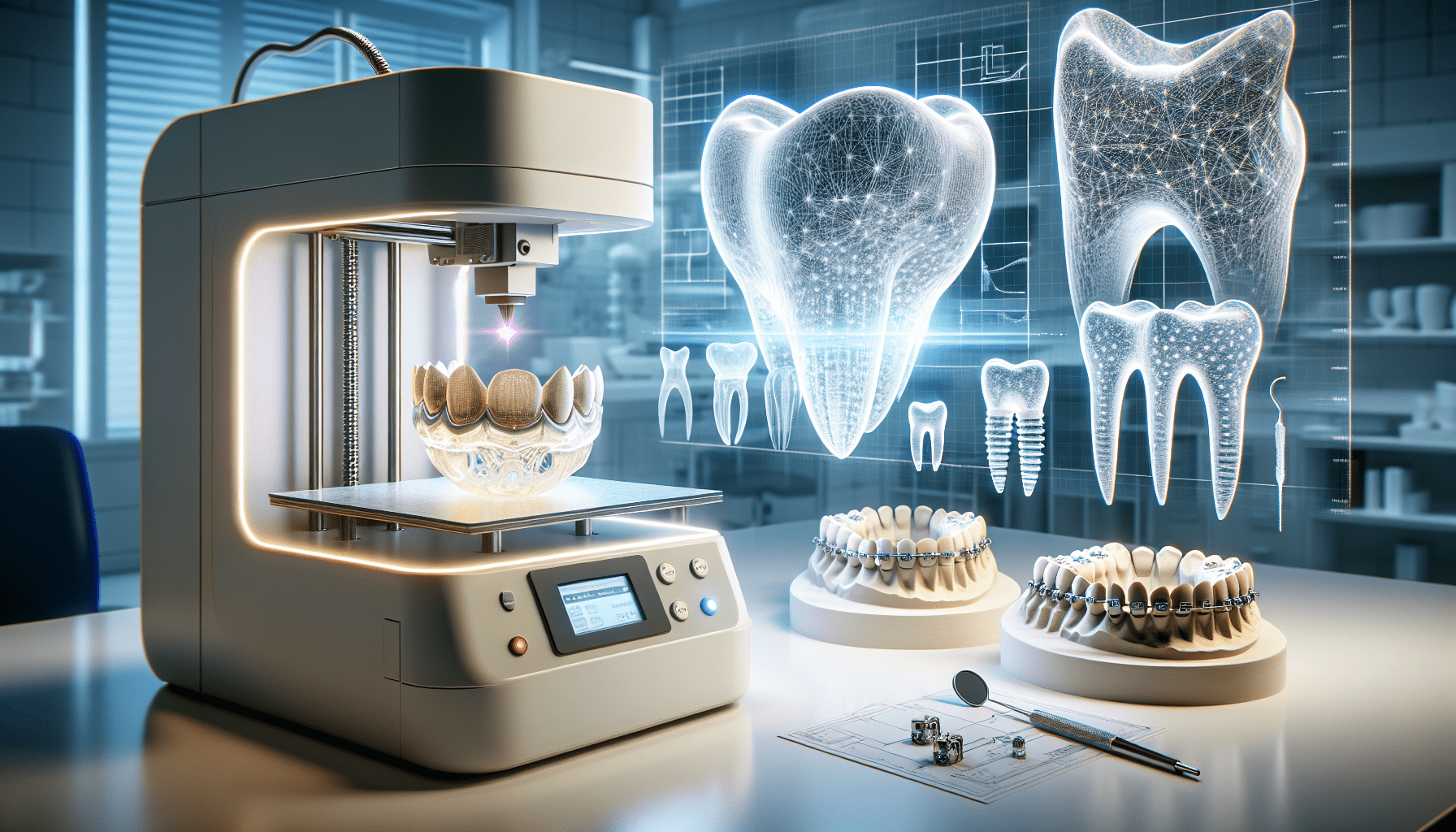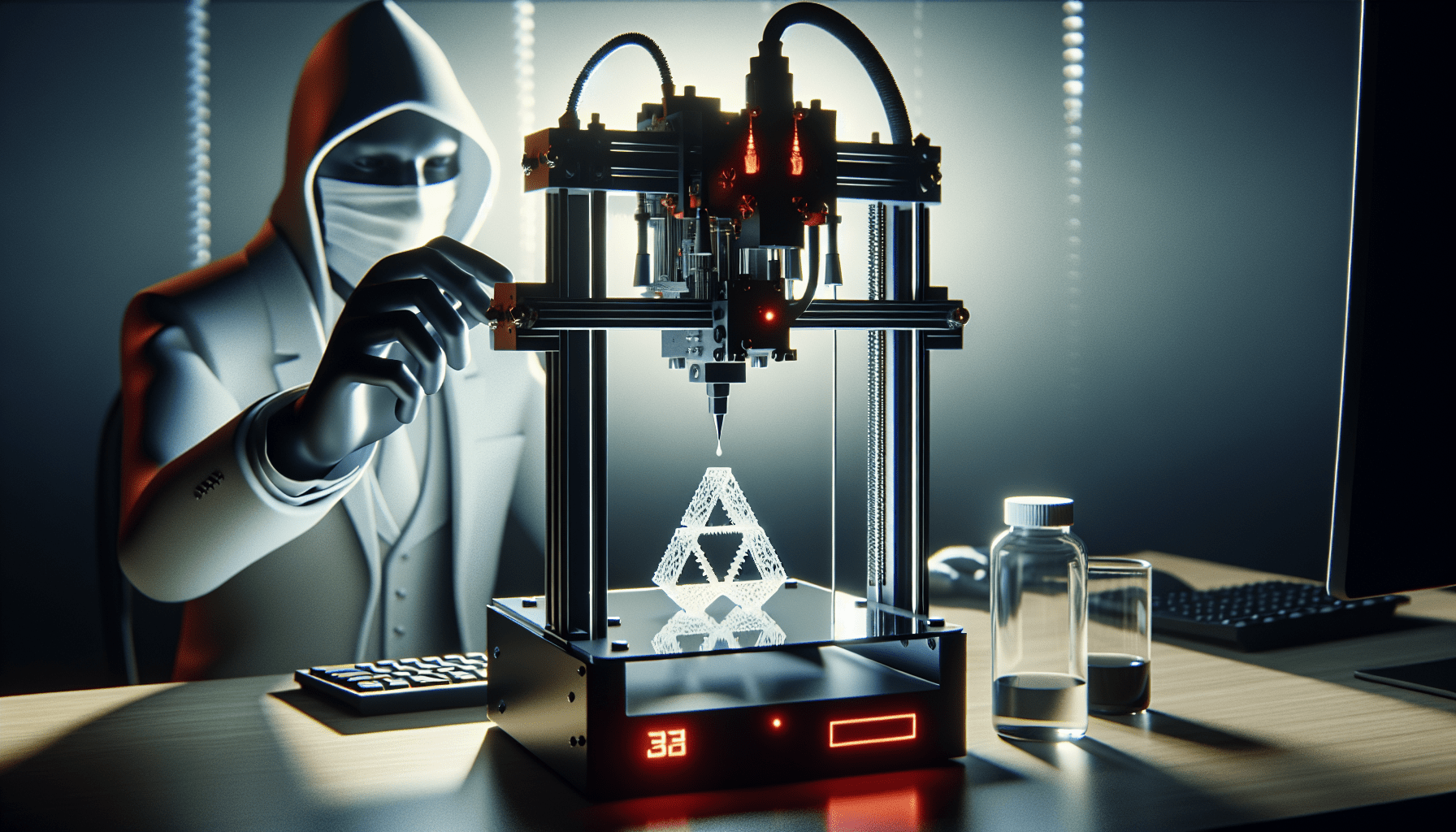Creality Ender 3 V3 SE 3D Printer, 250mm/s Faster FDM 3D Printers with CR Touch Auto Leveling, Sprite Direct Extruder Auto-Load Filament Dual Z-axis & Y-axis, Printing Size 8.66 * 8.66 * 9.84 inch
$229.00 (as of June 18, 2025 23:32 GMT +00:00 - More infoProduct prices and availability are accurate as of the date/time indicated and are subject to change. Any price and availability information displayed on [relevant Amazon Site(s), as applicable] at the time of purchase will apply to the purchase of this product.)In the rapidly evolving world of 3D printing, the dental industry is experiencing a boom like never before. Over the past few weeks, there has been a surge of new announcements from various players in the dental industry, showcasing the latest technologies, applications, and products. Lithoz has unveiled their 3D printed lithium disilicate restorations, while Boston Micro Fabrication (BMF) has introduced the world’s thinnest cosmetic dental veneers. PostProcess has launched a new post-processing unit specifically designed for dental resin removal, and Nexa3D has announced new dental 3D printing resins for their equipment. Carbon, on the other hand, has unveiled “Automatic Operation (AO) Suite” to automate dental workflows. These recent developments indicate that more and more 3D printer manufacturers are recognizing the potential profitability of the dental market, leading to intense competition and an abundance of innovative products to choose from. Dental labs and practices can now enjoy an unprecedented range of options in the ever-growing field of 3D printing in dentistry.
The Dental Industry’s 3D Printing Boom: New Players, Technologies, and Applications
In recent weeks, the dental industry has experienced a surge of announcements related to 3D printing. This article will explore the new players, technologies, and applications that are contributing to the boom in the dental industry.
New Players
Lithoz and their 3D printed lithium disilicate restorations
Boston Micro Fabrication (BMF) and their UltraThineer material
PostProcess and their DEMI X 520 dental resin removal unit
Nexa3D and their new dental 3D printing resins
Carbon and their AO Suite for automated dental workflows
Lithoz has introduced 3D printed lithium disilicate restorations, including veneers and crowns, that utilize their LCM process. Developed in collaboration with Ivoclar, these restorations offer a new level of precision and aesthetics in dental applications.
BMF has developed UltraThineer, which is touted as the “world’s thinnest cosmetic dental veneers”. This innovative material reduces the amount of post-processing required, making it more attractive to dental labs.
PostProcess has unveiled the DEMI X 520, a specialized unit for dental resin removal. This machine simplifies the production of dental appliances, making the process more efficient and cost-effective.
Nexa3D has launched three new dental 3D printing resins, namely Rodin Denture Base, Rodin Surgical Guide, and Rodin Splint 2.0. These resins offer enhanced performance and expand the range of dental applications that can be achieved with 3D printing.
Carbon has introduced the AO Suite, a comprehensive solution for automating dental workflows. This suite includes features such as job preparation, automation options for devices, and a polishing cassette, enabling dental labs to streamline their operations.
New Technologies
LCM process used by Lithoz for 3D printed restorations
UltraThineer material by BMF for thin cosmetic dental veneers
DEMI X 520 by PostProcess for dental resin removal
New dental 3D printing resins by Nexa3D
AO Suite by Carbon for automated dental workflows
Lithoz’s LCM process is a key technology behind their 3D printed restorations. This process ensures high precision and accuracy, resulting in restorations that fit perfectly and provide optimal aesthetics.
BMF’s UltraThineer material is a breakthrough technology in the world of cosmetic dental veneers. Its exceptional thinness eliminates the need for excessive post-processing, saving time and effort for dental labs.
PostProcess’s DEMI X 520 is a cutting-edge technology developed specifically for dental resin removal. With its advanced capabilities, it simplifies the manufacturing process of dental appliances, leading to increased efficiency and productivity.
Nexa3D’s new range of dental 3D printing resins are built on innovative technologies that offer superior performance and versatility. These resins enable dental labs to produce a wide range of dental applications with exceptional quality.
Carbon’s AO Suite brings automation to dental workflows, revolutionizing the way dental labs operate. The suite’s features, such as job preparation and automation options, streamline processes and increase productivity.

New Applications
Lithoz’s 3D printed lithium disilicate veneers and crowns
BMF’s UltraThineer cosmetic dental veneers
PostProcess’s DEMI X 520 for easier dental appliance production
Nexa3D’s dental resins for various dental applications
Carbon’s AO Suite for automation of dental workflows
Lithoz’s 3D printed lithium disilicate veneers and crowns open up new possibilities for dental restorations. These restorations offer superior aesthetics and fit, improving patient satisfaction and comfort.
BMF’s UltraThineer cosmetic dental veneers provide dental labs with a game-changing solution for creating thin and natural-looking veneers. This technology reduces post-processing requirements, saving time and effort.
PostProcess’s DEMI X 520 simplifies the production of dental appliances, making it easier for dental labs to meet increasing demands. With this technology, dental labs can produce appliances more efficiently, reducing costs and improving patient outcomes.
Nexa3D’s dental resins offer a wide range of applications in the dental industry. From denture bases to surgical guides and splints, these resins provide dental labs with versatile options for various dental procedures.
Carbon’s AO Suite empowers dental labs with automation capabilities, streamlining their workflows and improving productivity. With features such as job preparation and automation options, dental labs can optimize their operations and deliver faster results.
Increase in Dental Market Focus
3D printer manufacturers targeting the potentially profitable dental market
Competition heating up in the dental application space
Formlabs as a major player in the dental market
Growing selection of dental products for dental labs and practices
Many 3D printer manufacturers are now focusing on the dental market, recognizing its potential for profitability. The dental industry offers a unique set of challenges and requirements that can be addressed with 3D printing technology, attracting manufacturers to invest in this space.
With the increase in market focus, competition is heating up in the dental application space. Manufacturers are constantly innovating and introducing new technologies and materials to gain a competitive edge in the market.
Formlabs has emerged as a major player in the dental market, pioneering its presence over eight years ago. Their early entry into the market has allowed them to establish a strong foothold and make significant advancements, making them a formidable competitor for other manufacturers entering the dental space.
The growing selection of dental products available for dental labs and practices is a testament to the industry’s progress. Dental professionals now have access to a wide range of high-quality products, enabling them to provide better solutions and patient care.

Reasons for the Dental Industry Boom
Poor press for 3D printer manufacturers in other industries
Recognition of the usefulness of 3D printing in dental applications
Perceived profitability of the dental market for 3D printer manufacturers
The boom in the dental industry can be attributed to several factors. Firstly, 3D printer manufacturers in other industries have faced negative press due to investment losses. This has led manufacturers to explore other areas where they can leverage the capabilities of 3D printing, such as the dental market.
The dental industry has recognized the usefulness of 3D printing in various applications. From restorations to orthodontics, 3D printing offers unmatched precision, customization, and efficiency. This recognition has sparked interest and investment in dental 3D printing.
The dental market is perceived as highly profitable for 3D printer manufacturers. With the growing demand for dental products and services, manufacturers see an opportunity to provide innovative solutions and capture a lucrative market share. This perception has driven manufacturers to invest in the dental industry and develop specialized technologies and materials.
The Impact on 3D Printer Manufacturers
Opportunity for 3D printer manufacturers to expand into the dental market
Competition from established players such as Formlabs
The dental industry boom presents a significant opportunity for 3D printer manufacturers to expand their offerings and enter a profitable market. Manufacturers can leverage their existing technology and expertise to develop tailored solutions for dental labs and practices.
However, established players like Formlabs pose a challenge for new entrants into the dental market. Formlabs has established itself as a leader in the industry, gaining the trust and loyalty of dental professionals. New manufacturers must differentiate themselves and offer unique value propositions to compete effectively in this space.
Benefits for Dental Labs and Practices
Greater selection of dental products to choose from
Improved technology and capabilities in dental 3D printing
Automation options for more efficient workflows
The dental industry boom has resulted in a greater selection of dental products available for dental labs and practices. This increased variety enables dental professionals to choose products that meet their specific requirements and deliver the best patient outcomes.
Advancements in technology and capabilities have significantly improved the quality and precision of dental 3D printing. Dental labs now have access to cutting-edge equipment, materials, and software that enhance their ability to provide accurate and aesthetic dental restorations.
Automation options have emerged as a significant benefit for dental labs and practices. Automation streamlines workflows, reduces human error, and increases efficiency. With the integration of automation technologies, dental professionals can optimize their processes and deliver faster and more consistent results.
Positive Outlook for the Dental Industry
Increased focus and investment in dental applications
Advancements in technology and materials for dental 3D printing
Improvements in efficiency and productivity for dental labs and practices
The outlook for the dental industry is positive, fueled by increased focus and investment in dental applications. Manufacturers are recognizing the potential of the dental market and are actively developing innovative solutions to meet the industry’s demands.
Advancements in technology and materials are revolutionizing dental 3D printing. Manufacturers are continuously improving their offerings, pushing the boundaries of what is possible in terms of precision, speed, and aesthetics. These advancements enable dental professionals to provide better solutions and patient care.
With the adoption of new technologies and materials, efficiency and productivity in dental labs and practices are experiencing significant improvements. Streamlined workflows, automation options, and advanced software systems are enabling dental professionals to deliver faster turnaround times and enhance their overall productivity.
Future Trends in the Dental Industry
Continued growth and innovation in dental 3D printing
Integration of automation and digital workflows in dental practices
Expansion of the dental market for 3D printer manufacturers
The dental industry is expected to continue its growth trajectory, with ongoing innovation in dental 3D printing. Manufacturers will continue to invest in research and development to enhance the capabilities of 3D printing in dentistry, leading to further advancements and improvements in the field.
The integration of automation and digital workflows is a prominent trend for the future of dental practices. Dental professionals will increasingly adopt automation technologies to streamline their processes and improve overall efficiency. Digital workflows will become more prevalent, allowing for seamless integration of various technologies and enhancing communication and collaboration among dental professionals.
As the dental industry continues to thrive, the market for 3D printer manufacturers will expand. With the increasing demand for dental products and services, manufacturers will undoubtedly explore new market opportunities and develop specialized solutions to cater to the evolving needs of dental professionals.
Conclusion
The dental industry’s 3D printing boom is being driven by new players, technologies, and applications. The introduction of innovative solutions by manufacturers such as Lithoz, BMF, PostProcess, Nexa3D, and Carbon has revolutionized the dental field, offering enhanced precision, efficiency, and customization.
These advancements have a positive impact on dental labs and practices, providing them with a greater selection of products, improved technology and capabilities, and automation options for more efficient workflows. The outlook for the dental industry is promising, with continued growth, innovation, and improvements in the future.
As the dental industry and 3D printing continue to evolve together, patients can expect to receive superior dental care, and dental professionals will have access to cutting-edge tools and technologies to deliver the best possible outcomes.










